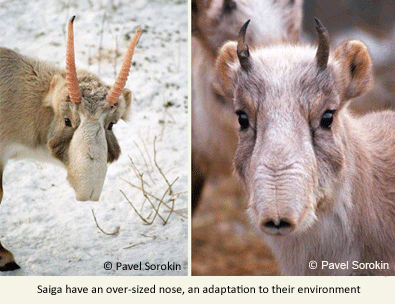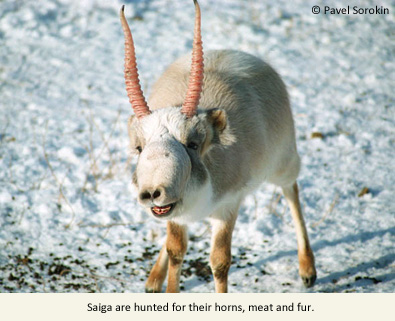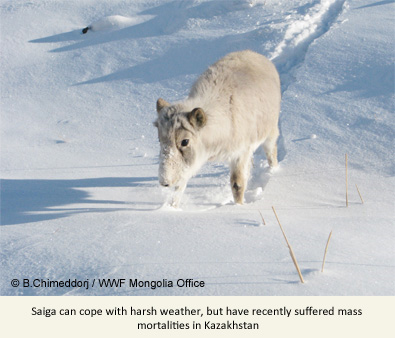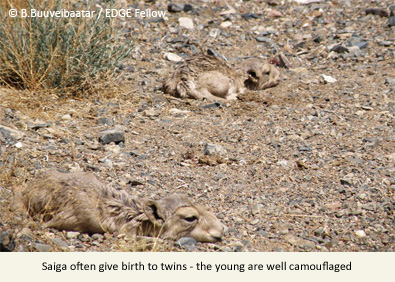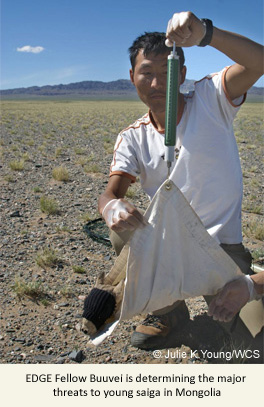The saiga (Saiga tatarica) is EDGE mammal conservation priority number 62, and is today’s IUCN Species of the Day.
This extraordinary-looking antelope is found in central Asia in about five distinct sub-populations. The saiga’s over-sized nose is thought to be an adaptation for warming and moistening inhaled air during the winter, filtering out airborne dust during the dry summer migrations, and acting as a counter-current heat exchange mechanism to control body temperature.
Saiga have long been hunted for their horn, skin, and meat, but populations were well managed during Soviet times and remained relatively stable. However, with the collapse of the Soviet Union in 1990 illegal poaching intensified – males were targeted in particular for their horns, which were promoted as an alternative to rhino horn in traditional oriental medicine. This resulted in a catastrophic decline, with numbers plummeting from more than one million saiga in 1991 to about 30,000 in 2003. This is one of the most sudden and dramatic population crashes of a large mammal ever seen, and caused the saiga to be listed as Critically Endangered with extinction.
Intensive conservation efforts in the past decade have helped reduce population declines. However, we were informed this week that the Ural population in Kazakhstan have suffered a devastating blow – more than 12,000 saiga have been found dead in an unusual mass mortality event. The dead were mostly females who had recently given birth, as well as their calves.
The official 2009 estimate of the size of the Ural population was 26,000 animals, and the population has just been through an unusually harsh winter, so these deaths represent a severe blow to the species. Investigations are underway to identify the cause of the deaths, which is likely a result of disease.
We are contributing to saiga conservation efforts through supporting EDGE Fellow Buuveibaatar, who is working on the smallest saiga sub-population in Mongolia, where there is just an estimated 1,500 saiga. Buuvei is investigating the causes of mortality, focussing on saiga calves, to help improve conservation management actions in the Shargyn Gobi Nature Reserve and guarantee the survival of the saiga antelope on the Mongolian plains. You can read more about Buuvei’s work in his blogs.
If you want to help our conservation efforts then please donate here.
